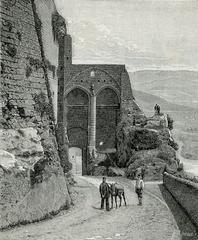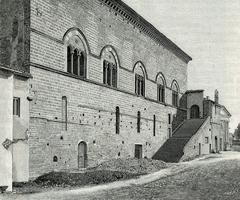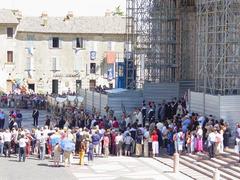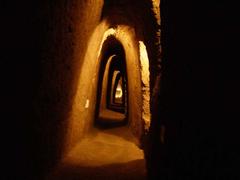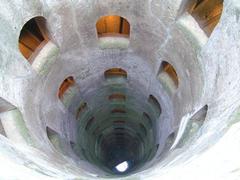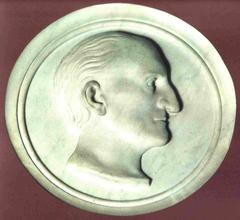Visiting Medieval Palaces of Orvieto: Hours, Tickets, and Tips
Publication Date: 17/08/2024
Introduction to the Medieval Palaces of Orvieto
Orvieto, a charming hilltop town located in the Umbria region of central Italy, is renowned for its stunning medieval palaces and rich cultural heritage. Perched 640 feet above the junction of the Paglia and Chiana rivers, Orvieto’s unique and strategic location has made it a significant settlement since Etruscan times (Britannica). The town, originally known as Urbs Vetus in late Roman times, showcases a seamless blend of Romanesque and Gothic styles, reflecting its architectural evolution over centuries. This guide delves into the historical significance, architectural marvels, and cultural importance of Orvieto’s medieval palaces, offering practical visitor tips to enhance your exploration of these historical sites.
The medieval palaces of Orvieto, primarily constructed during the 13th century, serve as monumental witnesses to the town’s past. From the Palazzo Comunale, which has played a crucial role in Orvieto’s administrative and political life since the 12th century, to the Palazzo dei Papi, a significant papal residence during times of political turmoil in Rome, each palace offers a unique glimpse into Orvieto’s historical tapestry. The Palazzo del Popolo and Palazzo dei Sette further underscore the town’s communal independence and governance during the Middle Ages. Meanwhile, the Palazzo Soliano symbolizes the reconciliation between the papacy and Orvieto after a period of territorial tension (Orvietoviva).
Contents
- Historical Background of the Medieval Palaces of Orvieto
- Introduction
- Origins and Early Development
- Palazzo Comunale
- Palazzo del Popolo
- Palazzo dei Papi
- Palazzo dei Sette
- Palazzo Soliano
- Architectural Significance
- Cultural and Civic Importance
- Visitor Information
- Tickets and Opening Hours
- Travel Tips
- Nearby Attractions
- Accessibility
- Special Events and Guided Tours
- Photographic Spots
- Visitor Tips
- Best Time to Visit
- Getting There
- Navigating the Town
- Admission and Tickets
- Dress Code and Etiquette
- Dining and Accommodation
- Avoiding Crowds
- Local Events and Festivals
- Practical Tips
- Additional Attractions
- Photographic Spots
- Frequently Asked Questions (FAQ)
Historical Background of the Medieval Palaces of Orvieto
Introduction
Orvieto, a picturesque town in the Umbria region of central Italy, is steeped in history that dates back to Etruscan times. The town, originally known as Urbs Vetus in late Roman times, sits atop an isolated rock plateau, 640 feet above the junction of the Paglia and Chiana rivers (Britannica). This unique and strategic location made it a significant settlement for the Etruscans and later the Romans. The medieval palaces of Orvieto, many of which were constructed during the 13th century, reflect its historical significance and architectural evolution.
Origins and Early Development
The medieval palaces of Orvieto are a testament to the town’s rich historical tapestry and its architectural heritage. These palaces serve as monuments to the town’s past, offering a glimpse into its political, social, and cultural life during the Middle Ages.
Palazzo Comunale
The Palazzo Comunale, situated in Piazza della Repubblica, is one of the most important medieval buildings in Orvieto. Initially dating back to the 12th century, this structure has undergone several enlargements and restorations over time, with the last major intervention carried out in the 1600s by Ippolito Scalza, a renowned local architect and sculptor (Orvietoviva). The Palazzo Comunale served as the headquarters of the Municipality of Orvieto and played a crucial role in the town’s administrative and political life.
Palazzo del Popolo
Another significant medieval palace is the Palazzo del Popolo, which stands as a testament to Orvieto’s communal independence during the 12th century. This palace was the seat of the people’s government and hosted various civic functions. Its construction reflects the town’s efforts to assert its autonomy and governance during a period marked by civil conflict and strife with neighboring cities (Britannica).
Palazzo dei Papi
The Palazzo dei Papi, or the Papal Palace, is perhaps the most historically significant of Orvieto’s medieval palaces. Constructed in the 13th century, this palace served as a residence for the popes during times of political turmoil in Rome. The palace also houses a civic museum that contains numerous works of art and a collection of antiquities from the nearby Etruscan necropolis of Volsinii (Britannica). The presence of the papal residence underscores Orvieto’s importance as a refuge and a center of ecclesiastical power during the Middle Ages.
Palazzo dei Sette
The Palazzo dei Sette, located next to the Torre del Moro, was named for the seven judges who represented the major corporations and trades of Orvieto during medieval times. This palace also served as a residence for the Pope and later housed the famous architect Antonio da Sangallo, who designed the Saint Patrick’s Well (Orvietoviva). Today, the Palazzo dei Sette is a modernized venue that hosts local events and art exhibitions, continuing its legacy as a center of civic and cultural activity.
Palazzo Soliano
Constructed in 1297, the Palazzo Soliano was built to symbolize the reconciliation between Pope Boniface VIII and the Municipality of Orvieto after a period of tension over territorial control. This elegant building, known in the Middle Ages as the “Palazzone,” represents the restored peace and harmony between the papacy and the town. The palace now houses the modern art museum Emilio Greco and the ticket offices of the Duomo (Orvietoviva).
Architectural Significance
The medieval palaces of Orvieto are not only significant for their historical roles but also for their architectural features. These buildings showcase a blend of Romanesque and Gothic styles, reflecting the architectural trends of the time. For instance, the Palazzo dei Papi features a robust and fortified structure typical of medieval papal residences, while the Palazzo del Popolo exhibits the communal architectural style with its large halls and civic spaces.
Cultural and Civic Importance
The medieval palaces of Orvieto played crucial roles in the town’s cultural and civic life. They were centers of administration, governance, and social gatherings. The Palazzo Comunale and Palazzo del Popolo, in particular, were integral to the town’s self-governance and communal identity. The Palazzo dei Papi, on the other hand, highlights Orvieto’s significance as a papal refuge and a center of ecclesiastical power.
Visitor Information
For tourists visiting Orvieto, exploring these medieval palaces offers a glimpse into the town’s rich history and architectural heritage. Here are some useful tips:
- Tickets and Opening Hours: Check the official websites or local tourist information for the most up-to-date ticket prices and visiting hours for each palace.
- Travel Tips: Many palaces are located within walking distance of each other, making it convenient to explore them on foot. Consider wearing comfortable shoes and carrying a map.
- Nearby Attractions: In addition to the palaces, visitors can explore the Duomo, Saint Patrick’s Well, and the Etruscan necropolis.
- Accessibility: Some palaces may have limited accessibility for those with mobility issues. It is advisable to check in advance.
Special Events and Guided Tours
Many of the medieval palaces host special events, guided tours, and art exhibitions. Visitors should check local listings and official websites for information on these events to enhance their visit.
Photographic Spots
The medieval palaces of Orvieto offer numerous opportunities for photography. Notable spots include the exterior and interior of the Palazzo dei Papi, the panoramic views from the Palazzo dei Sette, and the architectural details of the Palazzo Comunale.
Conclusion
In summary, the medieval palaces of Orvieto are a testament to the town’s historical significance, architectural heritage, and cultural legacy. These buildings not only reflect the town’s past but also continue to play vital roles in its present-day cultural and civic life. Exploring these palaces offers a unique insight into Orvieto’s rich history and its enduring charm.
Call to Action
We encourage you to visit Orvieto and experience its medieval palaces firsthand. For more information on visiting hours, tickets, and special events, check out the official websites or follow us on social media for the latest updates.
Exploring Key Medieval Palaces in Orvieto: Visiting Hours, Tickets, and Historical Sites
Introduction
Orvieto, a charming hilltop town in Italy’s Umbria region, boasts a rich history and stunning medieval architecture. Among its most notable structures are the medieval palaces that offer a glimpse into the town’s past. This guide will explore key medieval palaces in Orvieto, providing essential visitor information, including visiting hours, ticket prices, and historical insights.
Palazzo del Popolo
The Palazzo del Popolo is a significant medieval structure in Orvieto, built around the 14th century. It served as the residence of the Capitano del Popolo (Captain of the People), a crucial figure in representing the populace during the Middle Ages. The building later housed the Mayor and even functioned as the city’s popular theatre. Today, it is a conference center and is not open for tourist visits, but visitors can admire its exterior for free. The palace is a beautiful example of medieval architecture, featuring arches and trifore (three-lobed windows) embellished with frames. The great hall inside, known as Sala dei Quattrocento, once displayed frescoes depicting the Capitano del Popolo, the podestà, and various Popes from the 14th to the 17th centuries.
Visitor Information
- Opening Hours: Not open to the public
- Ticket Prices: Free to view exterior
- Accessibility: Exterior view only
Palazzo dei Papi
The Papal Palace attached to the Orvieto Cathedral was initially begun in the mid-13th century when the popes moved to Orvieto to escape conflict in Rome. Pope Urban IV and Pope Martin IV both resided in the town and likely oversaw the initial stages of its construction. Pope Boniface VIII extended the building, but it was left unfinished following the papal move to Avignon in 1309. It remained a papal residence until 1550, after which it was passed to the ownership of the cathedral. In 1896, it was redesigned as a museum, which it remains today. The museum houses information and artifacts detailing the history of the cathedral and town, including paintings, reliquaries, and original construction plans for the cathedral.
Visitor Information
- Opening Hours: Varies, check the official website
- Ticket Prices: Typically around €5-€10
- Accessibility: Wheelchair accessible
Palazzo Monaldeschi
The Palazzo Monaldeschi, also known as Palazzo Sforza Monaldeschi della Cervara or Palazzo Marsciano, is a Renaissance aristocratic palace located on Piazza Ippolito Scalza in the historic center of Orvieto. It is situated about a block north of the Church of San Francesco on Via Beato Angelico #52, at the corner with Via di Maurizio. The palace is a fine example of Renaissance architecture and reflects the wealth and influence of the Monaldeschi family, one of the most important noble families in Orvieto and its surroundings.
Visitor Information
- Opening Hours: Limited access, check with local guides
- Ticket Prices: Typically requires guided tour
- Accessibility: Limited
Palazzo dei Sette
The Palazzo dei Sette is directly connected with the Moro’s Tower and was an icon of the political and economic freedom the town enjoyed in the 13th and 14th centuries. The palace served as the headquarters for the Seven Lords (Signori Sette), leaders of the Arti in Orvieto. These guilds or associations of professionals like merchants and craftsmen played a significant role in the town’s governance. The palace’s architecture includes a medieval tower that stands out in Orvieto’s skyline, along with the imposing cathedral. The tower, approximately 50 meters high, is oriented according to the cardinal points and houses bells that marked important occasions in town life. Visitors can climb to the top of the tower to admire the panoramic views of Orvieto and the surrounding Umbrian countryside.
Visitor Information
- Opening Hours: Daily, 10 AM - 6 PM
- Ticket Prices: €3-€5
- Accessibility: Limited due to tower climb
Palazzo Comunale
The Palazzo Comunale is located in the Republic Square, which stands on the site of the ancient Roman Forum. The Town Hall, built in the early 13th century and enhanced in the 16th century, is situated on the south side of the square. The building is an excellent example of medieval civic architecture and continues to serve as a central administrative building in Orvieto. The square itself is a vibrant area with many antique shops and is a great place to explore the town’s medieval heritage.
Visitor Information
- Opening Hours: Varies, check official website
- Ticket Prices: Free
- Accessibility: Wheelchair accessible
Palazzo Clementini
The Palazzo Clementini is another fine Renaissance palace in Orvieto, built during the city’s period of economic prosperity in the 16th and 17th centuries. The palace reflects the architectural changes that took place in Orvieto during this time, as the city became an important papal province and attracted many popes and cardinals. The presence of these high prelates and pontiffs initiated the development of the city, which was further consolidated when Orvieto became part of the Kingdom of Italy in 1860.
Visitor Information
- Opening Hours: Limited access, check with local guides
- Ticket Prices: Typically requires guided tour
- Accessibility: Limited
Palazzo Coelli
The Palazzo Coelli is another notable Renaissance palace in Orvieto. Like Palazzo Clementini, it was built during the city’s period of economic prosperity and reflects the architectural style of the time. The palace is a testament to the wealth and influence of the noble families in Orvieto and their role in the city’s development.
Visitor Information
- Opening Hours: Limited access, check with local guides
- Ticket Prices: Typically requires guided tour
- Accessibility: Limited
Visitor Tips
-
Best Time to Visit: The best times to visit Orvieto are during spring (April to June) and autumn (September to October). The weather during these periods is generally pleasant, and the city is less crowded compared to the summer months (Italy Together).
-
Getting There and Around: Orvieto is well-connected by train from Rome and Florence, making it a perfect day trip. However, to fully experience the town, consider staying overnight. The town is compact and easy to navigate on foot, and there is also a funicular that connects the lower town with the upper, hilltop part of Orvieto (Italy Together).
-
Dress Modestly: Orvieto has several religious sites, including the stunning Duomo di Orvieto. It’s advisable to dress modestly (covering shoulders and knees) when visiting these places (Italy Together).
-
Try Local Cuisine: Orvieto’s cuisine is rich and varied. Be sure to try dishes like ‘umbricelli’ (hand-rolled pasta) in a truffle sauce, wild boar, and local cheeses. Also, don’t forget to enjoy Orvieto’s white wines (Italy Together).
-
Shop for Local Crafts: Orvieto has a strong tradition of ceramics. Look out for the colorful, hand-painted ceramics that make for great souvenirs or gifts (Italy Together).
-
Purchase a Carta Unica: This tourist card gives you access to several of Orvieto’s main attractions for a single price, which can be more economical than buying individual tickets (Italy Together).
-
Respect the Siesta: Like much of Italy, Orvieto observes the afternoon rest period or ‘riposo’. Many shops close in the afternoon, usually from around 1:00 PM to 4:00 PM, so plan your shopping or visits accordingly (Italy Together).
-
Stay Hydrated: Especially in the summer months, temperatures can rise, so carry water with you and stay hydrated (Italy Together).
Conclusion
By exploring these medieval palaces and following these visitor tips, tourists can have a memorable experience in Orvieto, immersing themselves in the rich history and culture of this enchanting Italian town. Don’t forget to share your experiences and follow us on social media for more travel tips!
FAQ
Q: What are the visiting hours for Orvieto palaces? A: Visiting hours vary by palace; it’s best to check official websites or local guides for the most accurate information.
Q: Are there guided tours available? A: Yes, many of the palaces offer guided tours, which can provide more in-depth historical context and access to areas not open to the general public.
Q: How much do tickets cost? A: Ticket prices vary; they typically range from €3 to €10. Some palaces may have free exterior views.
Q: Is Orvieto accessible for people with disabilities? A: Accessibility varies by palace. Some have wheelchair access, while others, like those with towers, may havelimited access.
Q: What is the best time of year to visit Orvieto? A: Spring (April to June) and autumn (September to October) are ideal times to visit, with pleasant weather and fewer crowds.
Exploring the medieval palaces of Orvieto provides a fascinating journey through history, showcasing the town’s significant architectural and cultural heritage. By following these tips and guidelines, visitors can make the most of their experience in this enchanting Italian town.
Summary of Key Points
In conclusion, the medieval palaces of Orvieto stand as enduring testaments to the town’s rich historical and architectural heritage. These structures not only reflect the political, social, and cultural life of Orvieto during the Middle Ages but also continue to play vital roles in the town’s present-day cultural and civic activities. From the administrative significance of Palazzo Comunale and the communal independence represented by Palazzo del Popolo to the ecclesiastical power highlighted by Palazzo dei Papi, each palace offers a unique and profound insight into Orvieto’s past. Moreover, the architectural elegance of these buildings, blending Romanesque and Gothic styles, adds to their allure and historical importance (Britannica; Orvietoviva).
For visitors, exploring these medieval palaces provides a captivating journey through time, allowing one to appreciate the town’s historical significance and architectural marvels. Practical tips, such as the best times to visit, ticket information, and accessibility details, ensure a seamless and enjoyable experience. Additionally, the vibrant cultural scene, local events, and nearby attractions further enrich the visit, making Orvieto a must-see destination for anyone interested in history, architecture, and Italian culture.
We encourage you to immerse yourself in the historical ambiance of Orvieto and its medieval palaces. For the latest updates on visiting hours, tickets, and special events, be sure to check official websites or follow us on social media. Your journey through Orvieto’s medieval heritage awaits, promising a memorable and enriching experience.
Sources and Further Reading
- Britannica, n.d., Orvieto
- Orvietoviva, n.d., Historic Palaces Orvieto
- The Geographical Cure, n.d., One Day in Orvieto
- TripSavvy, n.d., Orvieto Travel Guide
- Paul Passing Through, n.d., Orvieto
- Earth Trekkers, n.d., Best Things to Do in Orvieto, Italy
- Flashpacking Italy, n.d., Visiting Orvieto Cathedral
- I Travel For The Stars, n.d., Orvieto Travel Guide
- Mom In Italy, n.d., Orvieto, Italy
